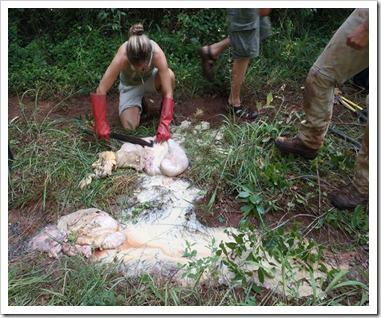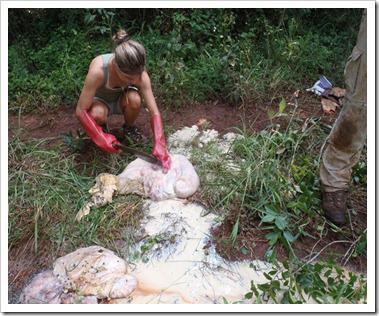After 4 intensive weeks of trapping we are happy to tell you that we caught and collared 1 leopard, 2 brown hyaenas and 2 female baboons. Trapping is always fun and exciting, especially when we catch an animal, but there is also a slightly less enjoyable, more gruesome, part that we do not usually share (so as not to scare off any potential volunteers!).
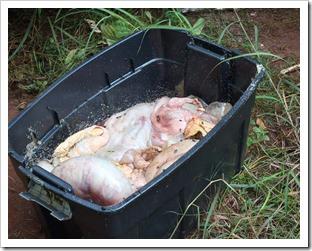
To trap leopards or hyaenas, we must prepare the trap sites in advance and bait them almost every day. Our assistants are always happy to help and be part of it…at least for the first time! Indeed, looking for and cutting down piles of suitable branches in order to build the many bomas in 30°C with no shade to cool down, is not always easy.
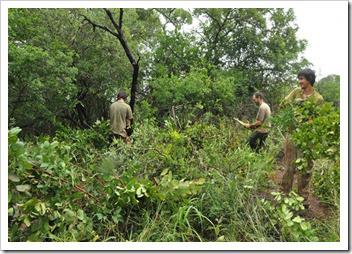
However, that’s not all – I think the most anticipated part is the prebaiting. Everyone wants, at least once, to cut the meat used to lure the animals into the trap. Yet when they are presented with the ‘chicken breast’ they’d imagined actually taking the form of a bloody (often rotting), stinking and maggot-infested cow foetus, the smile on their face tends to waver. The foetus can be in early stages of formation or almost fully grown and is provided by the abattoir as an unwanted by-product.
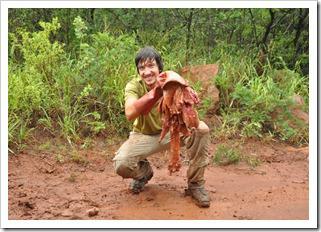
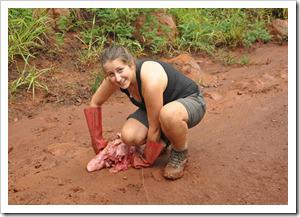
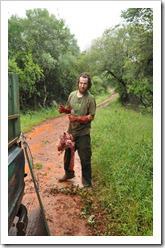
Sometimes to increase our chances of catching, we use fresh bait. Some of our “luckiest” assistants found themselves buying a live sheep that minutes later was to become future bait. After choosing and transporting the sheep from a local farm, it was then their job to prepare the fresh bait…is sheep-skinning a skill that can be put on your CV?! It is now.
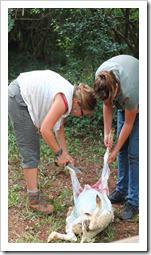
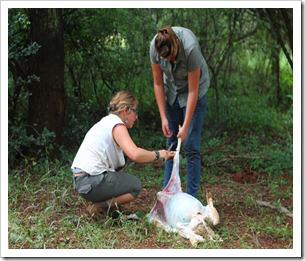
At the end of a busy day of trap building, our assistants are often still smiling, yet tired and covered in scratches – not to mention stinking of foetus and sweat…they could almost be the bait themselves!
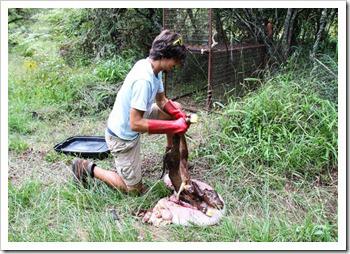
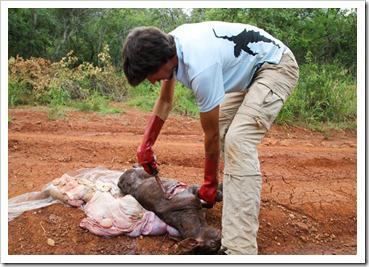
After weeks of prebaiting, the exciting part of the process can begin and the traps can be opened. Traps are checked throughout the night to ensure that any leopard or hyaena will not be held for a long time. Though exciting as it is, checking traps can be hard work. With few hours sleep and exceptionally rocky roads to contend with, the thrill of a potential catch is what keeps the enthusiasm high. With every bone in your body rattled and your stomach shook, the first check at 11pm involves driving to a ‘signal hotspot’ to detect whether or not a trap has been triggered using a remote sensor. Assistants then clatter their way back along the road to grab a short 4.5 hours sleep (if they’re lucky enough not to have the screech of bushbabies outside their room keeping them awake!) before another check at 4:30am. If nothing is caught, this final check involves actually driving to all the traps (which took 1.5 hours round trip) in order to close them for the day. Despite the lack of sleep and bumpy drives when half asleep, checking the traps is the job that our assistants enjoy the most – to be on duty on the night that an animal is caught is amazing!
The last, and surely the most glamorous part of trapping, is the burying of old bait. That is, the bait that was already bloody, stinking and maggot-infested, which has now been sat in the baking sun for at least a week. The bait that has now become a liquid soup of putrid green slop that has so many maggots it could almost move across the floor on its own…nice!
